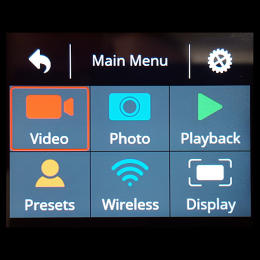The Future Of Action Cameras Comes Into Focus With Garmin’s VIRB Ultra 30
Action cameras are hard to use. GoPro’s top-of-the-line Hero4 Black, for instance, has three buttons that you have to push in different sequences just to navigate the settings. The only indicator of where you are is a 0.8-inch monochrome screen, à la gadgets from the early 2000s. In fact, action cameras—typically ensconced in hard-to-reach spots like the top of your bike helmet—are inherently difficult to control. Try pressing the “record” button while barreling down a mountain trail, and the resulting video could be of you flying off your bike and into a tree.
GoPro’s aspiring rival, Garmin, aims to make things easier by including voice control in its new VIRB Ultra 30 camera. And it didn’t stop there. The unit (listing for the same $500 as the Hero4 Black) expands on Garmin’s unique advantage over its competitors: the G-Metrix system of built-in sensors. Like previous models, it includes an accelerometer, altimeter, barometer, and gyroscope. But the new model also adds a magnetometer (i.e. compass) and a more sensitive GPS receiver. They allow the Ultra 30 to constantly track changes in things like speed, pace, altitude, and G-force—as previous models do—and now also aspects of jumps, like height, distance traveled, and number of rotations in the air. The camera can even incorporate data from other sensors, like a chest-strap heart-rate monitor. Garmin’s VIRB Edit software gives you the option to add custom overlays of this data to the video.
In other ways, Garmin is playing catchup to the GoPro Hero4 Black, with upgrades to 4K/UHD video resolution and faster frame rates for slow-mo playback. Garmin also adopted a copycat design—dumping the beefy construction of previous VIRB models in favor of a GoPro-style naked camera module that requires a rugged clear case to use.
The Ultra lets you live-stream to YouTube with one touch, using a connection through the camera’s iPhone control app (sorry, Android). In January, GoPro enabled live-streaming to Periscope, and a year before that, GoPro already streamed to Meerkat and Livestream. Meanwhile, Sony action cameras connect to Ustream. Unfortunately, they’re all missing what may be the most important live-streaming platform: Facebook Live.

What makes the Ultra 30 a preview of the future is that some new features, especially voice control, are still rough. Garmin seems to be on the right track, though. GoPro is expected to follow with similar, perhaps grander, versions in its likely upcoming Hero5 action camera, which may debut in October. Rumored GoPro features—based on sources like a purported leaked manual and instructional video—include voice control, GPS, and auto uploading of videos from the camera to a cloud storage and editing service called GoPro Plus. It would also seem to have an LCD touch screen, as both the VIRB Ultra 30 and GoPro’s lower-end Hero4 Silver do. I know from a source that GoPro is putting a lot of work into a more user-friendly interface. (I contacted GoPro about the Hero5 rumors, but the company didn’t respond.)
I Wish You Could Hear Me Now
Holding the Ultra 30 in front of me, and speaking in a normal tone and non-robotic cadence, I said, “Okay, Garmin, start recording,” and it did, with a cheerful little beep. It also obeyed commands to “Stop recording,” “Take a photo,” or “Remember that,” to tag a cool video highlight so it’s easy to find later.

But when I put my helmet on and rode along a breezy beach trail, the Ultra 30 often couldn’t hear me. Sometimes it did, when I carefully enunciated and nearly screamed, “Okay Garmin! Start recording!” or some other command. Sometimes even that didn’t get results, although it did get puzzled stares from unwitting beach-goers who could hear me yelling at the air.
Since it’s an action cam, trying the Ultra 30 on a bike with a little wind doesn’t seem unfair. The voice commands aren’t reliable enough to use, though simply making the meek confirmation beep louder could be a good enough fix. The GoPro Hero5 is rumored to support even more commands. It will have to understand them more reliably than the Ultra 30 does to be useful.
The video looked pretty sharp, even under the harsh glare of an afternoon sun, and the audio was really impressive. The Ultra 30 includes a new high-sensitivity microphone and inlet in the waterproof case. It picked up my voice while I was speaking softly and riding into an oncoming breeze. In their own cases, the GoPro Hero4 models sound as if they had been locked in the trunk of a car.
With the VIRB Ultra 30, Garmin has largely closed the gap with GoPro—in part by largely imitating GoPro—and Garmin even excels in some areas. The addition of voice control, though still clunky, is such a common-sense feature that it’s hard to imagine future action cameras not having it. The Ultra 30’s beefed-up sensors are in line with the trend of quantifying our lives through fitness trackers (which Garmin also makes), smartphones, and smart watches.
But Garmin has been chasing two-year-old rival products. GoPro could easily jump ahead again with its successors, which are likely to emerge soon. That may not be great news for Garmin, but it is for customers who can take advantage of ever-better features in the action-camera arms race.
Fast Company , Read Full Story



(54)


